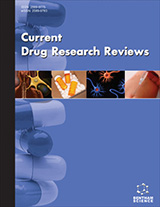Abstract
Azelaic acid (AZA) is a white crystalline dicarboxylic acid naturally found in grains, rye, and barley. AZA has substantial biological and therapeutic abilities (viz a viz) its anti-inflammatory, anti-oxidant, anti-keratinizing, anti-microbial properties, etc., which contribute to its applicability in the management of mild to harsh dermatological complications (acne, rosacea, dermatitis, hyper-pigmentation, carcinomas, etc.). AZA has shown its effectiveness against varied non-inflammatory and inflammatory lesions by normalizing hyper-keratinization state and attenuating the increased levels of microbial content. Topically AZA, either alone or in conjunction with other active moieties, has proved to effectively prevent acne and several other hyper-pigmentary conditions. Chronic applicability of AZA has been evidenced with the effects like itching, burning, stinging, redness, etc. To deal with the former issues, research is being conducted to substitute the conventional formulations with novel preparations (liposome’s, niosomes, micro sponges, lipid nanocarriers, etc.), which could enhance the overall pharmaceutical and pharmacological profile of the drug. This article is an attempt to highlight the basic physiochemical properties of AZA, its physiological role (especially in dermatology), various commercial preparations and recent novel approaches that are in research with an aim to augment the therapeutic and safety profile of AZA.
Keywords: Acne, anti-hyper-pigmenting, anti-keratinizing, azelaic acid, lipid nano-carrier, Propionibacterium acnes.
Graphical Abstract
[http://dx.doi.org/10.1007/BF02540689]
[http://dx.doi.org/10.3390/molecules25081882] [PMID: 32325747]
[http://dx.doi.org/10.1111/j.1365-2133.1983.tb03990.x] [PMID: 6222755]
[http://dx.doi.org/10.1111/j.1365-2133.1984.tb04025.x] [PMID: 6234914]
[http://dx.doi.org/10.1111/j.1365-2133.1986.tb02856.x] [PMID: 2938615]
[PMID: 2528256]
[PMID: 2475995]
[PMID: 2528258]
[PMID: 2528259]
[PMID: 2528257]
[http://dx.doi.org/10.1016/S0190-9622(87)70294-1] [PMID: 2963038]
[http://dx.doi.org/10.1007/BF00412547]
[http://dx.doi.org/10.1016/S0190-9622(94)70140-7] [PMID: 8021377]
[http://dx.doi.org/10.1016/S0140-6736(80)91555-X] [PMID: 6103442]
[http://dx.doi.org/10.1111/j.1365-2672.1988.tb02441.x] [PMID: 2459099]
[http://dx.doi.org/10.1007/BF00372056] [PMID: 1867478]
[http://dx.doi.org/10.3109/10715769109049121] [PMID: 1769610]
[http://dx.doi.org/10.1371/journal.ppat.1000527] [PMID: 19629174]
[http://dx.doi.org/10.1111/j.1600-0625.2010.01107.x] [PMID: 20545756]
[http://dx.doi.org/10.1111/exd.12066] [PMID: 23278893]
[http://dx.doi.org/10.1007/s00105-011-2142-9] [PMID: 22002717]
[http://dx.doi.org/10.1111/1523-1747.ep12547184] [PMID: 99481]
[http://dx.doi.org/10.1046/j.1523-1747.2003.12321.x] [PMID: 12839559]
[http://dx.doi.org/10.1016/0006-2952(84)90376-9] [PMID: 6704136]
[http://dx.doi.org/10.1038/jid.2009.8] [PMID: 19225542]
[http://dx.doi.org/10.1111/1523-1747.ep12277353] [PMID: 2473140]
[http://dx.doi.org/10.1093/jac/29.6.661] [PMID: 1506349]
[http://dx.doi.org/10.1111/j.1365-2133.1993.tb03165.x] [PMID: 8217752]
[http://dx.doi.org/10.1099/00221287-36-3-405] [PMID: 14217352]
[http://dx.doi.org/10.1016/j.ejps.2003.12.006] [PMID: 15066659]
[http://dx.doi.org/10.1093/jac/34.3.321] [PMID: 7829407]
[http://dx.doi.org/10.3109/09546639309082152]
[http://dx.doi.org/10.1093/jac/28.6.843] [PMID: 1726169]
[PMID: 2925320]
[PMID: 2980117]
[PMID: 3700102]
[http://dx.doi.org/10.1111/1523-1747.ep12277084] [PMID: 4056455]
[http://dx.doi.org/10.1111/1523-1747.ep12276684] [PMID: 4031538]
[http://dx.doi.org/10.1111/j.1365-2133.1985.tb02404.x] [PMID: 4096883]
[http://dx.doi.org/10.1111/1523-1747.ep12276681] [PMID: 4031537]
[PMID: 2520453]
[http://dx.doi.org/10.1016/0006-2952(85)90630-6] [PMID: 4004885]
[http://dx.doi.org/10.2165/00003495-199141050-00007] [PMID: 1712709]
[http://dx.doi.org/10.1111/j.1365-2133.1986.tb02775.x] [PMID: 3942687]
[http://dx.doi.org/10.1111/1523-1747.ep12285783] [PMID: 3745962]
[http://dx.doi.org/10.1111/1523-1747.ep12531744] [PMID: 448162]
[PMID: 2438874]
[http://dx.doi.org/10.1001/archderm.126.2.252] [PMID: 2301969]
[PMID: 2528259]
[http://dx.doi.org/10.1016/0738-081X(89)90061-8] [PMID: 2667735]
[PMID: 2773614]
[http://dx.doi.org/10.1111/j.1365-2133.1986.tb04876.x] [PMID: 3718862]
[PMID: 2528258]
[http://dx.doi.org/10.3109/09546638909094478]
[PMID: 2528260]
[http://dx.doi.org/10.1016/j.addr.2012.09.037] [PMID: 23036225]
[http://dx.doi.org/10.1159/000086666] [PMID: 16015019]
[http://dx.doi.org/10.4236/jbnb.2011.225075]
[http://dx.doi.org/10.1016/S0378-5173(03)00087-5] [PMID: 12672598]
[http://dx.doi.org/10.1016/j.ijpharm.2008.10.003] [PMID: 18992314]
[http://dx.doi.org/10.4081/dr.2019.8075]
[http://dx.doi.org/10.1016/j.biopha.2016.07.014] [PMID: 27484346]
[http://dx.doi.org/10.1080/10837450.2016.1200614] [PMID: 27346659]
[http://dx.doi.org/10.4103/japtr.JAPTR_289_18] [PMID: 31041186]
[http://dx.doi.org/10.5530/ijper.50.3.34]
[http://dx.doi.org/10.1039/C5RA00713E]
[http://dx.doi.org/10.1021/acs.cgd.9b01302]
[http://dx.doi.org/10.1016/j.indcrop.2017.08.030]
[http://dx.doi.org/10.1016/j.jddst.2018.07.008]
[http://dx.doi.org/10.1016/j.ijpharm.2019.04.016] [PMID: 30965120]






























